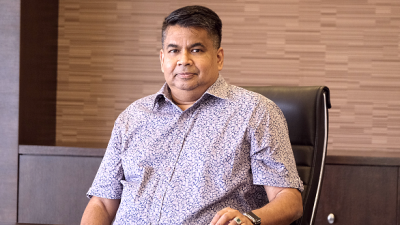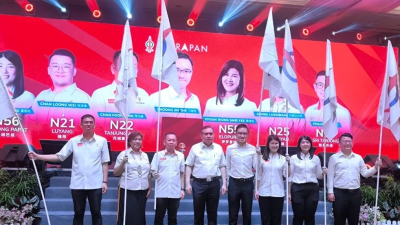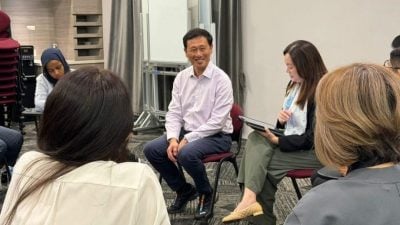
The intersection of the education system, the burgeoning gig economy and the brain drain may seriously challenge Malaysia’s future.
With a massive brain drain already in place, as more and more students choose to join the gig economy instead of pursuing tertiary education, understanding the factors driving this disinterest in tertiary education is paramount to ensuring that the educational system remains relevant and effective in preparing individuals for the rapidly evolving landscape of the modern job market.
In an era of rapid technological advancements and shifting professional landscapes, the traditional pathways to success are undergoing a profound transformation.
The allure of flexible work arrangements, lucrative opportunities, autonomy, and on-demand work gaining momentum challenges the conventional notions of the value of higher education.
Armed with a tech-savvy mindset and an innate entrepreneurial spirit, the younger generation questions the age-old narrative that equates tertiary education with assured prosperity.
This shift in attitude raises critical questions about the potential consequences for the future workforce, economy, and societal development.
As per the Organization for Economic Cooperation and Development (OECD), the enrolment figures in tertiary education serve as a measure of a nation’s prospective capacity for a skilled workforce in the future (refer to “Equipping future talents with education, skills to thrive”).
Global data also shows that higher tertiary education enrolment correlates with better national outcomes over time (Figure 1).
Very well, there could be a reciprocal relationship, thus creating a vicious cycle!

However, Figure 2 illustrates UNESCO’s data concerning the trajectory of tertiary education enrolment proportions in Malaysia.

Overall, Malaysia’s enrolment rate has been in decline since 2016.
In 2020, Malaysia stood at 42.57 percent, while the world average based on 113 countries was 51.98 percent. Malaysia’s enrolment rate is significantly lower compared to advanced economies such as, for example, Finland (95 percent), Singapore (93 percent), the United States (88 percent), Germany (73 percent) or Japan (6 percent).
Consistent with the OECD expectations, the Employment Statistics, Second Quarter 2022 report by DOSM revealed that 62.2 percent of jobs were in the semi-skilled category.
If the decline in tertiary education enrolment continues, it could potentially cast a shadow on the growth of the skilled workforce, consequently influencing the holistic progress of the nation and making Malaysia’s objective of becoming a high-income nation a distant dream.
To effectively address this issue, it is vital to understand the potential forces driving this change.
Brain drain and its push factors
The public data points to an exponential growth of Malaysian brain drain over the last four decades. According to global empirical research, one of the systematic impacts of the brain drain on its home country is a decline in the quality of education.
At the same time, poor implementation and execution of the affirmative policy in education is profoundly featured in empirical research as one of the key push factors behind the Malaysian brain drain (refer to “Malaysian brain drain: don’t go chasing waterfalls”).
Both factors can severely impede tertiary enrolment among capable students who now may prefer educational options abroad.
Fresh graduates earn less salary than those working in the gig economy
According to the president of the Malaysian Employers Federation (MEF), Datuk Dr Syed Hussain Syed Husman, the average starting salary of graduates holding an honors degree is approximately RM2,700 (refer to “Employers unable to meet fresh grads’ high salary expectations” from May 19, 2023).
Meanwhile, a Grab driver can make around RM4,000 a month.
Such a disparity in earnings has become a compelling factor for the younger generation when considering career paths potentially steering individuals towards the gig economy rather than pursuing traditional tertiary education routes.
A misconception among youngsters that gig work can offer sustainable livelihood
A misconception that gig work can offer a desired lifestyle might be rooted in inadequate information about the long-term implications of such employment and a lack of proper financial planning — retirement savings, future family support and economic safety net.
Holding a degree does not guarantee a high-paying job
Among the significant reasons for young people losing interest in conventional employment pathways is an observation that holding a degree does not guarantee a high-paying job, especially in an economy with a shrinking industry complexity (breadth and depth) and predominantly low- and semi-skilled jobs.
With this uncertainty, the gig economy presents itself as a pragmatic option, offering a source of income without the perceived constraints of formal education.
According to the Graduate Statistics 2021 by DOSM from July 27 2022, the number of unemployed graduates recorded 197,4000 persons out of 4.77 million graduates in the labor force, while skill-related youth underemployment has reached a new high – 1.55 million as of 2021.
As more and more young people encounter difficulties securing jobs, many are drawn to the gig economy for quick income while seeking permanent employment.
However, there is a danger that such temporary work can become permanent as young individuals quickly become too comfortable with the gig economy’s flexibility.
Poverty
According to the article “Poor students forgoing higher education, cause for concern” by Bernama, there has been an increasing trend in Malaysian students from low-income households forgoing higher education, especially after the Covid-19 pandemic.
High school graduates from low-income households who have completed their SPM often face the obligation to enter the workforce promptly to provide financial assistance to their families and cover their expenses.
The gig economy may appear as a potentially profitable sector for these students, offering a swift income source.
The above shift in the younger generation’s perspective about their career pathway can be a serious concern as the gig economy provides less stability, security and earning potential than a more “regular” career in the long term.
Gig workers are also not protected under the Work Act 1995 and other labor ordinances.
Gig platforms often lack benefits like health coverage and paid leave for workers. Job security is lower, and gig workers shoulder more risk using personal resources for tasks such as deliveries or freelance work (“22 gig economy statistics for 2023”).
Despite existing retirement saving options like EPF’s i-Saraan for gig workers, their awareness and participation are limited. This highlights the need for government-led educational initiatives to boost awareness.
Malaysian Gig Economy Commission (SEGiM), to be announced in the 2024 Budget, seeks to address informal workforce challenges and ensure gig worker well-being.
This framework is crucial for supporting gig workers, facilitating their ongoing economic contributions, and enabling skill enhancement – upskilling, reskilling, and cross-skilling (“Gig economy commission to improve the welfare of workers to be unveiled in Budget 2024”).
Without swift political intervention and effective remedies, Malaysia may witness a critical scarcity of skilled labor already in the medium term, hampering businesses in their search for necessary expertise, deterring foreign investors and keeping Malaysia’s economy positioned at the lower echelons of the value chain.
Innovative education system reforms are essential to attract students towards tertiary education, fostering a skilled workforce that aligns with the demands of the nation’s economy and ensures competitiveness on par with more developed countries.
However, there is also the need to adopt a realistic and practical approach to resolve issues that align harmoniously with evolving perspectives and the job landscape.
Recognizing that not all individuals are suited for traditional academic tertiary education is crucial.
Instead of solely emphasizing the pursuit of conventional higher education, it becomes imperative for stakeholders to explore diverse frameworks that refine the entire societal spectrum, nurturing the highest potential within everyone.
EMIR Research would like to urge policymakers to consider the following:
◾Educational reform through aligning our education system with global trends set by successful national education systems (for details, refer to an earlier article by EMIR Research, “Urgent need to reform Malaysian education system”) and relevantizing it for 4IR (and soon 5IR) reality.
◾Affirmative policy in the education system must be based on criteria while allowing sufficient flexibility to not disadvantage exceptionally bright students.
As empirical data shows, thus far, affirmative action, due to its poor implementation and execution, has been ineffective in closing the intended gaps (refer to “Ruthless colonisation Mat Kilau could not even imagine”).
◾Introduce progressive wages strictly linked to productivity, knowledge skills and abilities via the Input-Output-Outcome-Impact model.
◾Adoption of the hybrid model in university – Malaysia could implement a similar University-industry partnerships model as in the UK, which involves students dividing their time between practical training in workplaces and academic learning at universities, which enables them to earn supplemental income while advancing their education (“Efficiency in university-industry collaboration an analysis of UK higher education institutions”).
◾Prove support to underprivileged families of talented students by identifying them during their middle school years. By catching them earlier, we can help those who may have the potential but lack the motivation to pursue higher education due to challenging family circumstances.
This is also one of the mechanisms to extend the safety net in a very targeted approach, notably by not just extending subsidies but employing or re-training and re-employing if necessary (see “4IR enabled farmers: solving national food security” for low-hanging fruit solutions).
◾Normalizing TVET as an alternative institution to conventional education to produce industry-ready graduates – the government must promote TVET as an equivalent choice for students who prefer non-conventional tertiary education, refraining from portraying it as inferior to university academics.
A successful Scandinavian model serves as a good example, where vocational education is highly regarded as equipping students with relevant skills for prosperous careers and seamlessly integrates into the education system in such a way that it holds parity with academic learning.
For this purpose, an integrated model between TVET and universities allowing TVET students to study in the local Universities for up to one year can also be considered.
◾Locate TVET institutions in strategic places, such as Ipoh, Kota Kinabalu, and Kuching, for effective collaboration between industries and universities.
◾Encourage corporate participation to commit to TVET Madani – examples are the recent TM contribution of RM3.5 million for TVET Madani Success to enhance the students’ employability (“TM commits RM3.5 million for TVET Madani success”) and the Foodpanda scholarship program for its rider to pursue a diploma in MIU (“Second shot at higher learning for gig workers”).
◾Strategic collaboration with local and international TVET institutions – provision of government scholarships for local TVET students to study in TVET institutions abroad.
◾Produce through TVET a high-skilled workforce well equipped for digital economy, renewable industry, smart cities, etc.
Education is fundamental in shaping society and determining the country’s future. It can be the root of many socio-economic issues, so innovations must be made to the system to keep education in line with the changing practices.
To do so, leadership with vision is needed.
(Dr. Rais Hussin and Chan Myae San are part of the research team at EMIR Research, an independent think tank focused on strategic policy recommendations based on rigorous research.)
ADVERTISEMENT
ADVERTISEMENT






































